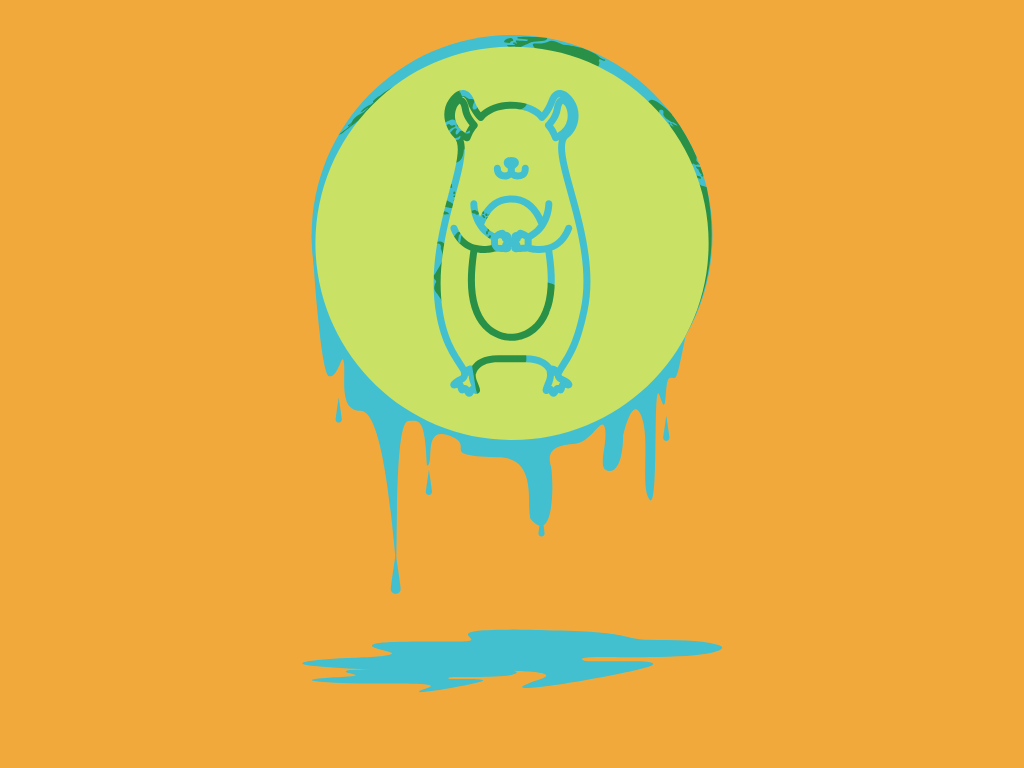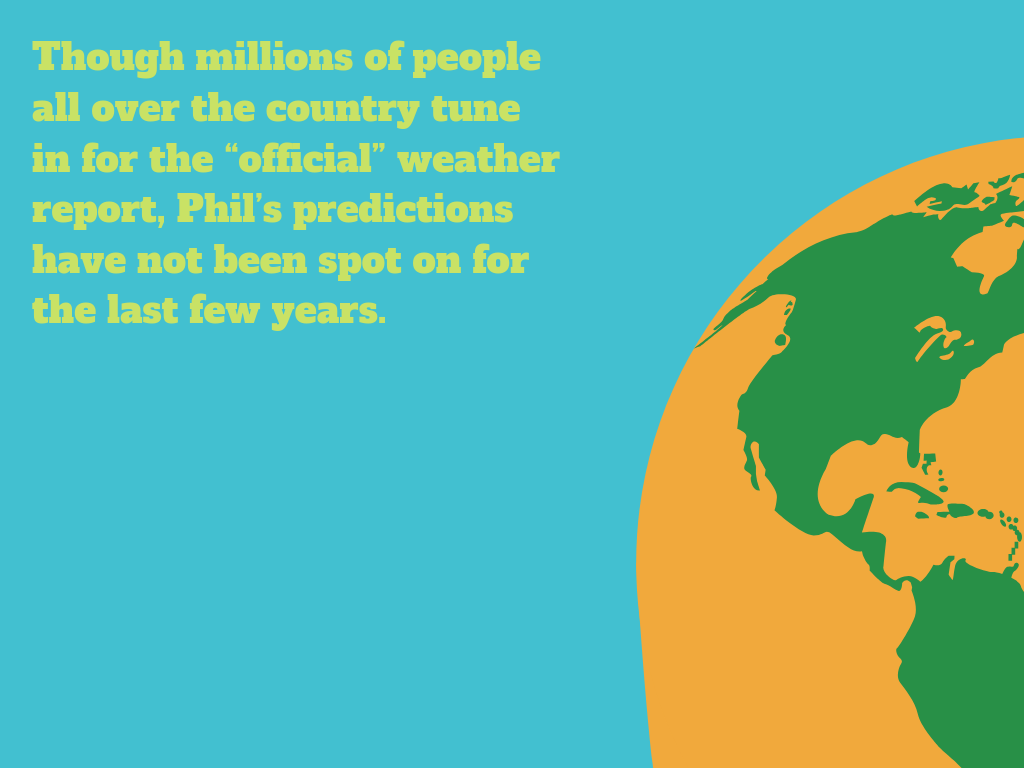Is Punxsutawney Phil a Fraud?
Words by Anu Shetty
Illustration by Katie Herchenroeder
This past Friday, thousands of people braved the morning cold to gather at Gobbler’s Knob in Punxsutawney, Pennsylvania to find out whether they should prepare for spring cleaning or brace for the next few weeks of blistering temperatures.

As Punxsutawney’s Phil emerged from his hole and sat upon a tree stump, he told his handler, A.J. Dereume, that he did not see his shadow and predicted an early spring for all. The crowd of people broke in applause and cheers as they were relieved to find out that the bone chilling temperatures from the days prior would be ending soon.
Groundhog Day is a beloved celebration and tradition in the United States that began over 130 years ago; but the festivities themselves root back to a Christian holiday, Candlemas Day, celebrated in ancient Europe. Every year midway between the winter and spring equinox, people would bring their candles to church to have them blessed in the hopes of bringing good fortune through the next few weeks of winter.
Somewhere down the line of the holiday’s history, a hedgehog’s shadow-sighting in Germany added that element to the celebration. As the Germans immigrated to the United States, they brought their traditions along with them and used the groundhog to get the job done.
As far as the holiday goes now, ever year on February 2nd, the Punxsutawney Groundhog Club brings Phil out of his hole and places him on the middle of a tree stump in Gobbler’s Knob for him to make his much-awaited prediction.
Though millions of people all over the country tune in for the “official” weather report, Phil’s predictions have not been spot on for the last few years.

According to the National Oceanic and Atmospheric Administration (NOAA), Phil’s predictions over the last decade have had a 40% accuracy rate, making them less accurate than flipping a coin to decide the forecast. Recent events in the U.S. highlighted that Phil’s early Spring may have just been wishful thinking.
Last week, the United States was in the middle of a record breaking polar vortex that killed upwards of 20 people in the middle of the country, and left many others devastatingly injured. The majority of the country experienced temperatures below freezing, and cities like Chicago were colder than regions such as Antarctica, notorious for their blistering weather.
With global warming causing unpredictable weather patterns - following the vortex, this week has seen some of the warmest temperatures in February - one wonders how it is possible for a groundhog to predict the forecast for the next month and a half when government institutions such as the National Aeronautics and Space Administration (NASA) and NOAA are finding it difficult themselves.
Though the report was a few weeks late, NASA and NOAA came out with a joint statement on Wednesday, February 6 affirming that this past year has been the warmest in Earth’s history. The phrase should sound familiar to those paying attention as the last five years have been the warmest years in history, with each successive year beating the one prior.

Since the 1880s, the global temperature has increased 1 degree Celsius and is exponentially increasing to reach the 1.5 warming limit set in the global Paris Climate Agreement.
While the current administration’s lackadaisical approach to the inevitable issue and lack of understanding of the science behind how climate change presents is being condemned by domestic and international institutions, it is up to the everyday person to take these matters into their own hands as much as they can and help fight the seemingly uphill battle.
No matter how you commemorate Groundhog Day - be it by watching the movie or by tuning in at 7:30 am to catch the news live - the holiday should be celebrated to its fullest. Yet, you should remember that whether or not Phil’s predictions are accurate this year, forces influencing the climate are out of his paws.





